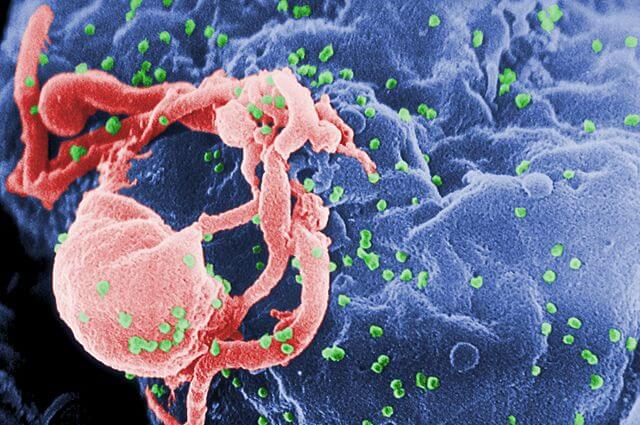Scientists at the University of Pittsburgh have identified why some HIV-infected people experience much slower disease progression, even without medication, and it has to do with cholesterol levels in specific immune cells. They report their findings in mBio®, the online open-access journal of the American Society for Microbiology.
“A fascinating aspect of the AIDS epidemic is that a small percentage of HIV-1-infected persons, termed nonprogressors or controllers, maintain a relatively normal number of CD4 T cells (Th cells) and low viral load for many years without receiving antiviral therapy,” says lead author Giovanna Rappocciolo. “Knowing how these individuals naturally control their HIV-1 infection and prevent the virus from progressively destroying their Th cells could be critically important to developing effective therapeutic and prevention strategies for HIV-1/AIDS.”
When HIV enters the body, it is typically picked up by immune system cells, called antigen-presenting cells (APCs), including dendritic cells and B lymphocytes. Those cells then transport the virus to lymph nodes where the APCs pass it to other immune system cells, including Th cells, via a process known as trans infection. HIV then uses Th cells as its main site of replication. It is through replication in the Th cells that levels of HIV increase and overwhelm the immune system.
Even without antiretroviral drugs, approximately one in 20 people infected with HIV do not have the persistent increase in levels of HIV after initial infection and can sometimes go many years, even more than a decade, without the virus seriously compromising the immune system or leading to AIDS.
In the study Rappocciolo and her colleagues compared the ability of APCs from nonprogessors, progressors and uninfected control subjects to trans infect T cells. They found that while the cells from progressors and control subjects were highly effective at mediating trans infection, those from nonprogressors lacked the ability.
The researchers took a closer look and discovered that the APCs from nonprogressors had low levels of cholesterol, even though the patients had regular levels of cholesterol in their blood. Moreover, they found that trans infection could be restored by reconstituting cholesterol levels in the APCs of nonprogressors and could also be inhibited by reducing the cholesterol levels in the APCs of progressors.
Additionally, analysis of APCs from two nonprogressors obtained one to four years before primary HIV infection shows similar results, suggesting this is a genetically acquired trait.
“This defect in cholesterol metabolism is not a direct consequence of virus infection, but rather is likely present as an inherited trait in a low percentage of individuals. Understanding how this works could be an important clue in developing new approaches to prevent progression of HIV infection,” says Rappocciolo.



It is encouraging to know that patients that are infected with the HIV-virus can survive for a longer period of time, even a decade without showing an increase in HIV levels or signs of attacking the immune system.
This is possible because the person simply has low level of cholesterol and shows a slower rate of progression. At this stage only a small percentage of HIV-1 infected patients are nonprogressors, only about 1 in ever 20 HIV patients.
Lets hope with these breakthroughs in research of HIV and Aids, somebody can soon find a complete cure for this growing virus which affects many people world wide but especially in Africa.
I feel this study is a breakthrough in how HIV and AIDS is studied, even though it is a deformity that causes the virus not to respond to its surroundings it is a vital part to survival to that human host that has the deformity. I feel mutation of genes has become a survival mechanism to human through the years just as sickle-cell anemia, a deformity in red blood cells that help the individual from contracting the disease Malaria, helps human hosts survive in a bisarre way.
I feel that this is a part of natural selection and if scientists can understand the mutations in our bodies and why a mutated gene helps prevent a disease can play a vital role not only in prevention and curing of the disease but in the techniques used in studying the disease.
This study could have the potential to be a breakthrough in the research of HIV and AIDS and in researching a stable treatment and cure for it. The research in the past for an effective treatment and cure for HIV and AIDS has been remarkably difficult as the virus mutates and changes so rapidly that research behind it can’t keep up with such mutations. The fact that the disease progresses so slowly in people with higher cholesterol levels or in individuals with genetically acquired familial hypercholesterolemia may have some key or link to how this disease could potentially be treated more successfully or ultimately cured and therefore could initiate more research into this particular topic.